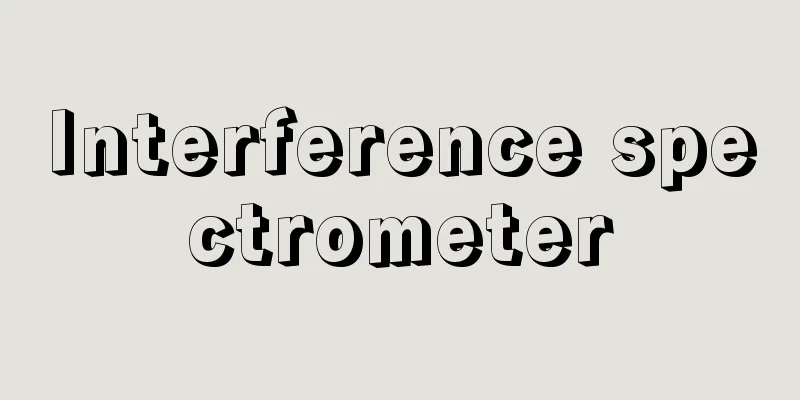Kinsekihan

|
Novelist. Born in Osaka. Graduated from Kyoto University's Department of Aesthetics. Kaneishi's parents are from Jeju Island in Korea. He was born on October 2, 1925, a few months after his mother arrived in Osaka, so he is a second-generation Korean resident of Japan. When he returned to Jeju Island in 1939, he had a national awakening that he was not a Japanese citizen or subject of the Imperial Nation, but a Korean and a Jeju Islander. During the war (World War II), Kaneishi was given the opportunity to participate in the independence and liberation struggle of his homeland, but he missed it with his own hands. Therefore, when the war ended, on the one hand he was happy about his homeland's liberation, but on the other hand he suddenly became emptier. In April 1948, the Jeju April 3 Incident (Jeju Island Incident) occurred, which decided the fate of Kim Seok-beom. As the Cold War structure was established around the United States and the Soviet Union (at the time), the United States made the southern half of Korea and Japan into anti-communist strongholds to prepare for the threats of North Korea and China. The United States held elections only in the southern half of Korea and tried to establish a puppet government with Syngman Rhee as president. The people who wanted the unification of Korea rose up in a struggle against this American policy. On Jeju Island, the people barricaded themselves in Hallasan Mountain in the center of the island and started an armed uprising. The government military and police under the command of the US military carried out a campaign to annihilate the Jeju Island guerrillas, with the slogan "kill 300,000 islanders." As a result, the entire island was reduced to ashes, and it is said that 80,000 people, including women and children, died. Talking about the Jeju April 3 Incident became taboo. Kim Seok-hyun's mission was to challenge this taboo and to connect with his homeland and people by writing about the voices, songs, silence, joy, anger, sorrow, and joy of those who died in the incident. "Death of a Crow" (1967) is the work that showed the origins of Kim Seok-hee, who would later become a storyteller of the April 3 Incident. Many Jeju residents were mercilessly killed. If he had been there, he would certainly have been killed. Fortunately, he survived. He would speak on behalf of the souls of those who were killed. And the souls of those who were killed must be healed. Kim Seok-hee himself participated in the revolutionary movement after the war and experienced severe setbacks at the scene, which qualified him to become a storyteller of the April 3 Incident on Jeju Island. In this way, the souls of the fighters who fell in the April 3 Incident began to be told through Kim Seok-hee's words. From "Death of a Crow" to his seven-volume long novel "Volcanic Island" (1983-1997, winner of the Osaragi Jiro Prize and the Mainichi Art Award), which took him 20 years to complete, Kaneishi Han has continued to speak about revolution and the destiny of humanity. He has shown that revolution in Korea cannot be achieved without taking into account the fundamental power of the nation's life. His literature, which began with "Death of a Crow" and includes "Mandeok: The Strange Ghost Tale" (1971), "Summer 1945" (1974), "Leftover Memories" (1977), "Years of Paralysis" (1986), "Volcanic Island" and "Full Moon" (2001), can be said to be the culmination of revolutionary criticism of the tradition of the revolutionary movement in Korea. Kim Seok-ho does not believe that either the North or the South is his homeland, but believes that Korea, where the unification of the nation has been achieved, is his homeland. He is also a writer who has always sought the soul of the nation in fiction, without writing autobiographical novels that center on his family or the "I." [Masaaki Kawanishi] "Summer 1945" (1974, Chikuma Shobo) ▽ "Leftover Memories" (1977, Kawade Shobo Shinsha) ▽ "Volcanic Island," 7 volumes (1983-1997, Bungeishunju) ▽ "Years of Paralysis" (1986, Shueisha) ▽ "Journey Homeland" (1990, Iwanami Shoten) ▽ "Full Moon" (2001, Kodansha) ▽ "New Edition: The Thoughts of the Korean Residents in Japan" (Kodansha Bunko) ▽ "Death of a Crow" (Shogakukan Bunko) ▽ "The Strange Tale of Mantoku's Ghost, The Conman" (Kodansha Bunko) ▽ "Why Have We Continued to Write? Why Have We Remained Silent? - Memories and Literature of the Jeju April 3 Incident" by Kim Ishihara and Kim Shijong (2001, Heibonsha) "The Takeda Seiji Collection (3): Seeing the Brokenness of the World" by Takeda Seiji (1997, Kaichosha)" ▽ "The Origin of Existence: The Literature of Kinseki Noriaki by Ono Teijiro (1998, Shinkansha)" ▽ "Kinseki Noriaki and the 'Volcanic Island': The Jeju April 3 Incident and the Literature of Koreans in Japan" by Nakamura Fukuji (2001, Dojidaisha) [References] | |Source: Shogakukan Encyclopedia Nipponica About Encyclopedia Nipponica Information | Legend |
|
小説家。大阪生まれ。京都大学美学科卒業。金石範の両親のふるさとは朝鮮の済州島(さいしゅうとう/チェジュド)である。母が大阪に着いて2、3か月後の1925年10月2日に生まれため、彼は在日二世になる。39年に済州島へ帰ったとき、自分が日本国民、皇国臣民ではなく、朝鮮人、済州島人であるという民族的覚醒(かくせい)をもった。戦争(第二次世界大戦)中、金石範は祖国の独立、解放闘争に参加する機会に恵まれたが、自らの手でその機会を逸した。そのため戦争が終わったとき、一方で祖国の解放を喜びながら、他方で急激に虚無的になっていった。 1948年4月、金石範の運命を決した済州島四・三事件(済州島事件)が起こった。アメリカとソ連(当時)を中心にした世界の冷戦構造が確立するなか、アメリカは朝鮮の南半分と日本を反共産主義の砦(とりで)にし、北朝鮮と中国の脅威に備えた。アメリカは朝鮮の南半分だけで選挙を行い、李承晩(りしょうばん/イスンマン)を大統領にする傀儡(かいらい)政権を樹立しようとした。朝鮮の統一を求める民衆は、このアメリカの政策に反対する闘争に立ち上がった。済州島では民衆が島の中央にある漢拏山(かんなさん/ハルラサン)に立てこもって武装蜂起(ほうき)した。アメリカ軍指揮下の政府軍警は、「30万島民の没殺(みなごろし)」をスローガンにして済州島ゲリラ殲滅(せんめつ)作戦を実施した。このため全島は焦土と化し、女性と子供を含む8万人が死んでいったといわれる。この済州島四・三事件を語ることはタブーとなった。このタブーに挑むこと、四・三事件で死んでいった人々の声を、歌を、沈黙を、喜びを、怒りを、哀(かな)しみを、楽しみを書くことで、祖国へ、民族へつながっていくことが金石範の使命になった。 『鴉(からす)の死』(1967)こそやがて四・三事件の語り部になっていく金石範の原点を示した作品である。多くの済州島民が無慈悲に殺されていった。自分もそこにいれば、必ず殺されていた。幸いにも自分は生き延びた。殺された人々の魂にかわって自分は語ろう。そして殺されていった人々の魂は癒(いや)されねばならない。金石範は自らも戦後の革命運動に参加し、その現場で激しい挫折(ざせつ)を味わうことで、済州島四・三事件の語り部になる資格を手に入れた。こうして四・三事件で倒れていった闘士の魂が金石範のことばを通して語られ始めたのだ。 『鴉の死』から20年をかけて完成した長編『火山島』全7巻(1983~97。大仏(おさらぎ)次郎賞、毎日芸術賞)まで金石範は革命について、人間の運命について語り続けてきた。朝鮮において革命は、民族の生命の根源的な力を視野にいれなければ達成できないことを示した。『鴉の死』に始まり『万徳(マンドギ)幽霊奇譚(たん)』(1971)、『1945年夏』(1974)、『遺(のこ)された記憶』(1977)、『金縛りの歳月』(1986)、『火山島』、『満月』(2001)に至る彼の文学は朝鮮における革命運動の伝統の革命的批判の完成といえるものである。 金石範は北であれ南であれわが祖国という考え方をとらず、民族の統一が果たされた朝鮮こそわが祖国という考えをとる。また彼は家族とか「私」を核にした私小説を書かず、つねに虚構のなかに民族の魂を探し求めてきた作家である。 [川西政明] 『『1945年夏』(1974・筑摩書房)』▽『『遺された記憶』(1977・河出書房新社)』▽『『火山島』全7巻(1983~97・文芸春秋)』▽『『金縛りの歳月』(1986・集英社)』▽『『故国行』(1990・岩波書店)』▽『『満月』(2001・講談社)』▽『『新編「在日」の思想』(講談社文芸文庫)』▽『『鴉の死』(小学館文庫)』▽『『万徳幽霊奇譚・詐欺師』(講談社文芸文庫)』▽『金石範・金時鐘著『なぜ書きつづけてきたか・なぜ沈黙してきたか――済州島四・三事件の記憶と文学』(2001・平凡社)』▽『竹田青嗣著『竹田青嗣コレクション(3) 世界の「壊れ」を見る』(1997・海鳥社)』▽『小野悌次郎著『存在の原基――金石範文学』(1998・新幹社)』▽『中村福治著『金石範と「火山島」――済州島4・3事件と在日朝鮮人文学』(2001・同時代社)』 [参照項目] | |出典 小学館 日本大百科全書(ニッポニカ)日本大百科全書(ニッポニカ)について 情報 | 凡例 |
<<: "Epigraphy" - Kinseki Mojiki
Recommend
Picea bicolor (English name) Piceabicolor
… [Toshio Hamatani]. … *Some of the terms mention...
Giant Octopus - Giant Octopus
...Many species are rarely seen by the general pu...
Asbestos - Ishiwata
Also called asbestos. A flexible and strong fibro...
Environmental effects
…The action of vegetation to change the environme...
Breviceps
…They lay eggs all year round, in puddles created...
Civil Procedure Rules
Based on the power to make rules granted by Articl...
Hjelmslev, Louis
Born: October 3, 1899 in Copenhagen [Died] May 30,...
Dry construction - KANSHIKI KOZO
In architecture, this is a construction method tha...
Young, CA (English spelling)
…The oldest record of the corona is in Philostrat...
Yō
These dolls were made as grave goods. They are a ...
gammadion
…Variations of the Latin cross include the Lorrai...
Tokyo Bay
A bay on the Pacific coast in the southern Kanto ...
Swallowing - Engage
When chewing, food that has been broken down and ...
Imamachi - Imamachi
A district in the west of Mitsuke City, in centra...
Chrysanthemum indicum (English spelling) Chrysanthemumindicum
…[Hiroji Koyama]. . … From [Hamagiku (Sea daisy)]...









